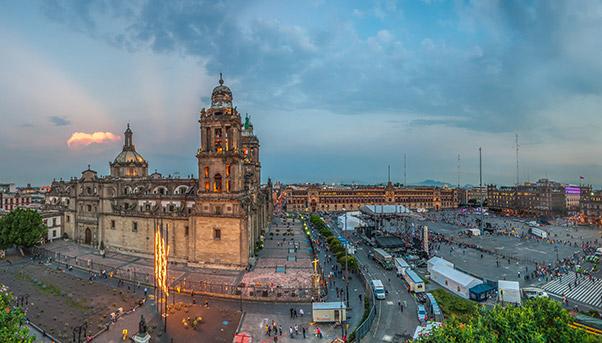
A stone’s throw from the Mayan temples at Tulum, clinging to the rocks that plunge down to the Gulf of Mexico below and inhabited solely by dozens of iguanas dozing in the sun may seem like an unusual place for a high-speed railway.
Yet this park immersed in the luxuriant green forests of the coast – spied for the first time by the Spanish conquistadores on March 4, 1517 – will be one of the stops on the “Maya Train”, the railway line that will cross the Yucatan peninsula to connect some of its fabled archaeological sites to the popular international tourist resorts on the coast.
Construction work on this 1,500-kilometre-long railway line is slated to begin in 2019,
lasting six years for an investment of about 100 billion Mexican pesos
($5.2 billion). This significant investment was made public recently by
the new Mexican government, confirming a campaign promise made by
President-elect Andrés Manuel Lòpez Obrador.
Obrador, who takes office on December 1, confirmed the plan after a
September cabinet meeting of the new government. One of the top items on
his “to do” list is to build a train link between the Yucatan’s main
tourist attractions. Senator Jose Luis Pech Varguez from Obrador’s
Morena party provided more details, confirming that the project is
already in a development phase and that it has been entrusted to
Fonatur, the National Tourism Fund.
The planned railway line will be “high speed” only in name, it emerges
from Pech Varguez statements to the Mexican press, because it will not
exceed speeds of 130 kilometres per hour. It will cross three states,
Quintana Roo, Campeche and Chiapas, with the goal of making it easier
for tourists to move around in one of Mexico’s most-visited areas by
giving them an efficient way to travel from north to south, leaving from
Cancun in Quintana Roo and ending in Palenche, Chiapas. The train will
stop at Tulum, Carrillo Puerto, Bacalar and Calakmul, in the state of
Campeche.
The Associated Press news agency has reported that the first section (connecting Cancun and Tulum with stops at Playa del Carmen and Puerto Morelos) will be completed in two years, while the rest of the project must still be planned.
The government has made up its mind to push ahead with the project, making good on the promise Obrador made in Cancun on June 26, when he launched the “Maya Train” in the middle of his election campaign.

Zocalo square, Mexico City
Rogello Ramìrez will handle the project at Fonatur.
«I understand that they will make some adjustments to the route of the
line and will define three stops», said Pech Varguez. «Two could be
Playa del Carmen and Puerto Morelos, the third, perhaps Tulum on the
Cancun-Tulum route».
Pech Varguez said the “Maya Train” will be funded partly by the government.
«The project involves government, private initiative and owners of the ejido land (communal farm land) where the railway line will be placed», adding that «the ejidos that own the land will participate as partners of the project».
Obrador vowed to support tourism in the entire region, not just the coast.
«We are going to support tourism in this region of the country, but
there will be equity; so that the tourists who come to Cancun, to Playa
del Carmen, can easily explore the Mundo Maya in the southern regions»,
he said.
Despite their immense appeal, many of the archaeological sites in the Yucatan are difficult to reach –
unlike the seaside resorts such as Cancun, which boasts an
international airport. That’s why the government wants to use this
opportunity to create wealth and development by enticing the visitors on
the coast to venture farther south.
Along with offering a huge development opportunity for the Yucatan economy, the idea of the “Maya Train”
highlights the importance the new administration places on the decisive
role of infrastructure works in terms of the country’s overall
development. President-elect Obrador has reiterated his aim to double
public spending, increasing investment to 4.1% of GDP, to be divided
between infrastructure and social programmes. At the same time, he vows
to abandon massive projects such as the Nuevo Aeropuerto Internacional de México,
or Mexico’s new international airport, which was slated to have 140
million passengers per year and cost at least $13 billion, to focus
instead on strategic infrastructure spread out across Mexico’s various
states.
This chosen path must be taken without missing a step if Obrador wants
to close the gap of $544 billion that the Global Infrastructure Hub has
calculated Mexico must spend to meet its infrastructure needs. This long
journey could begin with the first stop on the “Maya Train”.

